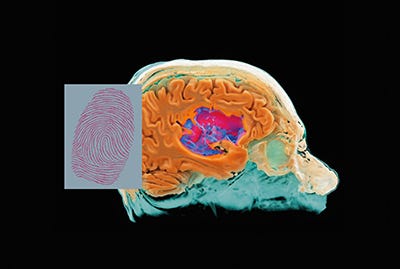Siemens Has Big Plans for This New MR Tech
May 13, 2016
The German multinational is working with Case Western Reserve University to bring magnetic resonance "fingerprinting" to market--potentially taking the technology to a whole new level.
Nancy Crotti
|
MR fingerprinting seeks to identify individual tissues and diseases, similar to how a fingerprint identifies an individual person. (Image courtesy of Siemens) |
Researchers at Case Western Reserve University have introduced an advanced type of imaging called magnetic resonance fingerprinting (MRF) in 2013. Now they've teamed up with Siemens' healthcare business to bring the technology to market.
MRF provides not only images of tissues but also accurate measurement of the physical properties of those tissues, according to the researchers. They have performed initial tests with brain and prostate tumor patients as well as with breast cancer patients who have liver metastases. MRF has also been used in cardiac examinations and with patients with multiple sclerosis, according to a joint statement from Case Western and Siemens.
Here's how the researchers described it in an email:
"In this new method we use the MR machine to generate a unique pattern of signals from each volume of tissue that's like a fingerprint. We compare that pattern to a library of known patterns that tell us about the specific physical properties of the tissue.
"This would be like hav(ing) a fingerprint to find a person in the computer database and then know where they live, how tall they are and their hair color. The discovered measurements of the tissues from MR Fingerprinting can then be used to define the specific components of normal tissue and disease such as tumor, in (a) new more reproducible manner. This may well allow earlier detection of disease and better ways to monitor how well treatments are helping."
Most information gleaned from MRIs is qualitative, based on observed differences between tissues, the statement says. Existing quantitative MRIs can measure diffusion, fat/iron deposits, perfusion or relaxation times, but they are time-consuming, and the results may vary, depending on the scanner and the user, according to the researchers. MRF promises to be faster and more accurate.
"The goal of MR fingerprinting is to specifically identify and characterize individual tissues and diseases," said radiology professor Mark Griswold, PhD. "But to try to get there, we've had to rethink a lot of what we do in MRI."
The team is working to expand this method for a range of different tissue properties. At the same time, the university is working toward expanding the technology to cover additional fields of application, according to the statement.
For Siemens, the focus of this collaboration is to improve reproducibility and possibly extend the procedure to different MR scanners and field strengths.The collaboration launched a work-in-progress imaging package for certain Siemens scanners used in research. The packages have been tested since January 2016 at the University Hospital Essen in Germany, and the Medical University of Vienna in Austria.
The Case Western Reserve researchers first published an article about MRF in the journal Nature in 2013. The Ohio university and the German medtech company have collaborated for more than 30 years on MRI technology, according to Griswold.
The MRF technique could redefine MRI, according to Professor Siegfried Trattnig of the Center of Excellence for High Field Magnetic Resonance at the Medical University of Vienna, referring to the initial research studies involving patients with malignant brain tumors and low-grade gliomas.
"MRF could help us, as radiologists, to make the paradigm shift from qualitative to quantitative imaging and to incorporate quantitative data into our daily routine. This has the potential to reduce scan times and in turn, bring considerable cost savings in the future," Trattnig said in the statement.
Learn more about cutting-edge medical devices at MD&M East, June 14-15, 2016 in New York City. |
Nancy Crotti is a contributor to Qmed.
Like what you're reading? Subscribe to our daily e-newsletter.
About the Author(s)
You May Also Like


.png?width=300&auto=webp&quality=80&disable=upscale)
